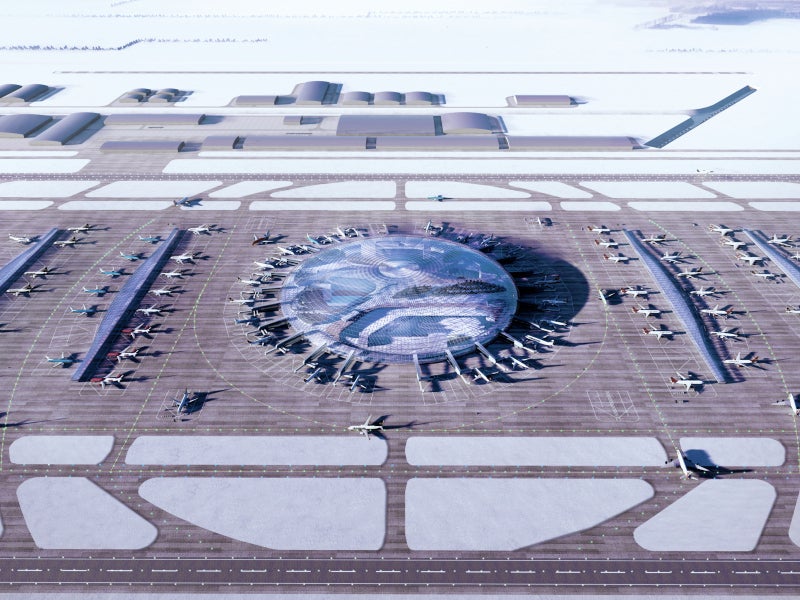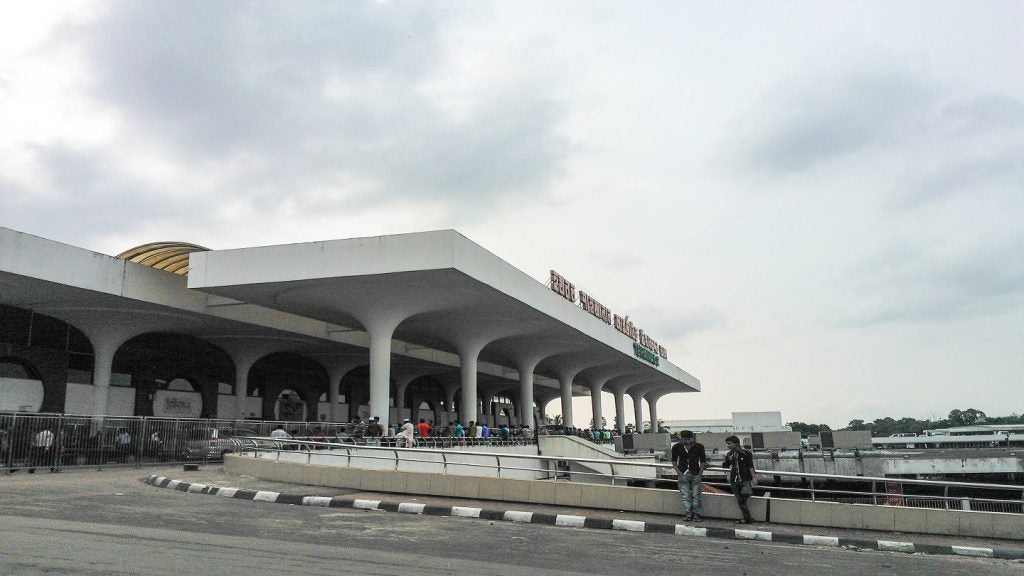A new central airport will be developed in Warsaw, Poland, as part of an integrated, intermodal mega transportation hub called Solidarity Transport Hub.
To be developed by Polish state company Centralny Port Komunikacyjny, the planned Solidarity Transport Hub will integrate air, rail, and road transport.
The airport forms the main component of the project, supported by rail and road transport infrastructure surrounding it. It is projected to initially handle up to 40 million passengers a year.
Proposed to be developed as a dual-use airport for civil and military purposes, the new central airport is expected to play a significant role in the security of Poland and Central and Eastern Europe.
It could be used by transport aircraft carrying military troops and combat equipment to defend Poland or the Baltic nations in the event of aggression by adversaries.
The railway and road components will be located within close proximity to the airport. The railway connections will enable passengers to commute between Warsaw and other large Polish cities in less than 2.5 hours.
The project will also involve the construction of more than 1,600km of new railway lines, which are expected to enable passengers to reach Warsaw from Solidarity Transport Hub within 15 minutes.
The Solidarity Transport Hub project is estimated to create more than 150,000 jobs.
Solidarity Transport Hub Airport location
The Solidarity Transport Hub will be situated between Warsaw and Lodz, near the A2 motorway. The planned Polish airport will be built on approximately 41km² (10,131 acres) of land, in the municipalities of Baranów, Teresin, and Wiskitki, 37km west of Warsaw.
Solidarity Transport Hub Airport project development
A total of nine architectural firms submitted preliminary designs for the project’s architecture as part of two design competitions held in 2019. The firms included Chapman Taylor, Foster+Partners, Grimshaw Architects, Zaha Hadid Architects, Benoy, Pascall+Watson, Woods Bagot, Populous, and KPF.
The design concepts are expected to be used as a source of inspiration in the airport’s masterplan, which is expected in the second half of 2022.
Construction work on the site is planned to begin by the end of 2023. The airport, along with 530km of railway lines, is expected to be completed by the end of 2027. The remaining part of the railway component is expected to be completed by 2034.
Details of Solidarity airport
The new Solidarity airport will be integrated with all types of ground transport, including an interchange rail station.
Airside infrastructure will include runways, taxiways, runway entry, air traffic control tower and navigation, aprons, an apron for helicopter emergency medical services, and de-icing pads.
Landside infrastructure will include a passenger terminal, a general aviation terminal, a cargo terminal, forecourts, parking spaces, and a public transport interchange.
Support infrastructure will include rescue and fire fighting service facilities, aircraft maintenance, repair and overhaul, airport and ground support equipment (GSE) maintenance, and de-icing support facilities.
The project will also create additional infrastructure including a railroad integrated with the country-wide system, and road connections to the public road network, as well as power, gas, and sewage connections and military infrastructure.
Financing
Poland and South Korea signed a memorandum of understanding (MoU) in December 2021 to cooperate on the Solidarity Transport Hub.
The MoU outlines steps for the joint financing and the creation of a joint venture. It is expected to provide Incheon International Airport Corporation (IIAC), which is the operator of the Incheon airport in South Korea, with a minority stake in the project. The two parties expect to agree upon the details about the terms of the investment by the end of 2022.
The European Commission (EC) agreed to provide zl108m ($25.2m) in co-financing for the building permit design of a tunnel for the high-speed railway component of the transport hub in Łódź in 2021. The funding will also be used to undertake preparatory works to build a railway line between Warsaw, Sieradz, and Poznań.
The Solidarity Airport was added to the EU’s investment priorities the same year.
Partnerships to support the hub
AGH University of Science and Technology signed a cooperation agreement with Solidarity Transport Hub to conduct research work to support the development of the project.
Solidarity Transport Hub also agreed to co-operate with the Warsaw University of Technology and the Łukasiewicz Research Network for the project development.
Poland and the UK signed a co-operation agreement in May 2020 to garner support on the project. Poland is expected to leverage the experience and know-how offered by the British aviation sector in planning, designing, and building the Solidarity Airport and the new railway lines.
Contractors involved
Arup Polska, a subsidiary of professional services provider Arup, was selected to conduct the pre-construction environmental survey for the project.
Netherlands Airport Consultants (NACO), a Dutch airport consultancy, was selected to prepare the master plan for the project in July 2021. The master plan will include details such as a general plan in accordance with aviation laws, specialised analyses, and pre-design documentation.
Multiconsult Polska was selected to provide technical support for the spatial survey and ground study for master plan and pre-design documentation for the project in January 2021. The contractual scope includes obtaining terrain data in the areas of geology, geodesy, geophysics, archaeology, and environment.
Bird & Bird, an international law firm based in the UK, received a contract to provide advice for the selection of key consultants for the project in May 2020.
IIAC was selected as the strategic advisor for the project in November 2020. It will offer its know-how to implement the Solidarity Transport Hub project.
CMS, an international law firm, advised IIAC on its bid to become the strategic advisor for the project.











